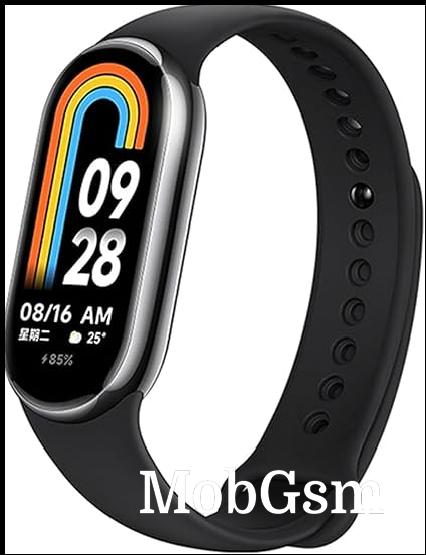Xiaomi Smart Band 8 review
Xiaomi’s Mi Band lineup, which goes by the Smart Band outside of China has amassed quite the following thanks to its super aggressive pricing and solid feature set. We’re at generation 8 now and that brings a focus on style with a much larger pool of first-party straps in all kinds of styles and several under-the-hood improvements.
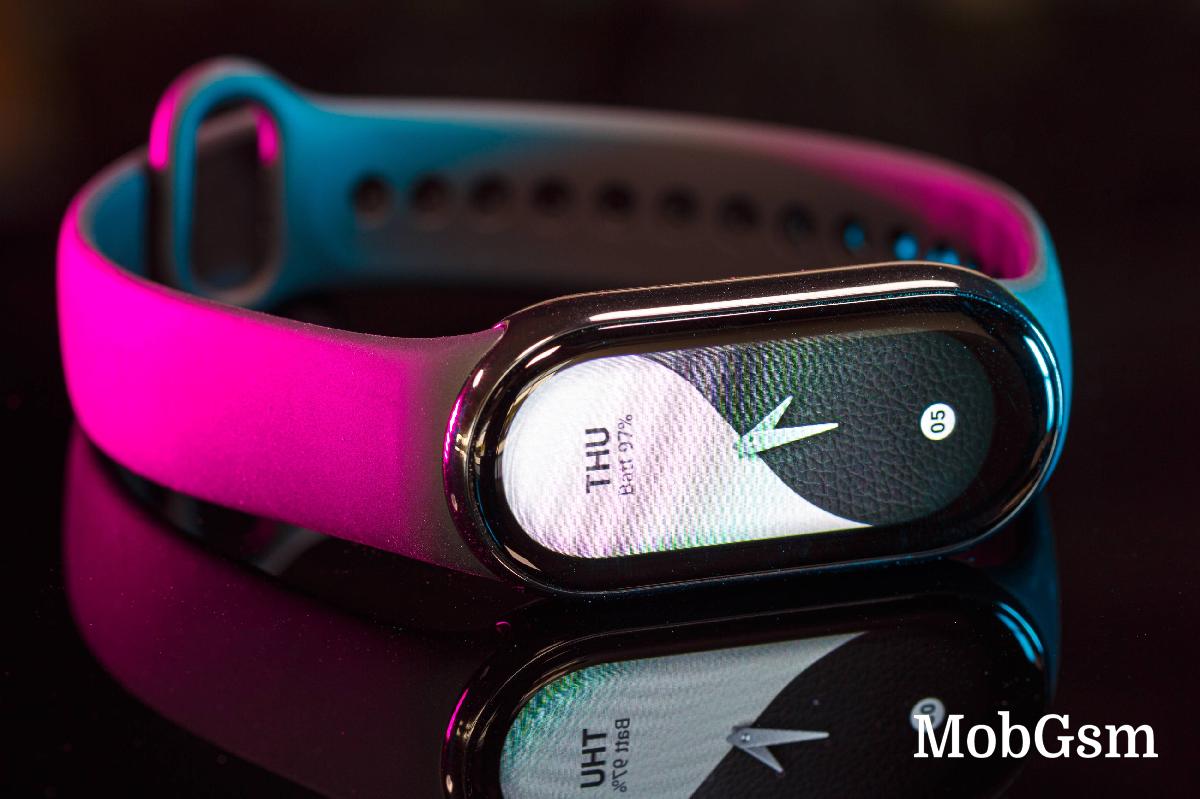
I’ve been using an older Mi Band 5 for a few years now and I love its ease of use and lightweight design, making it effortless to wear 24/7. It’s a killer low-profile alarm clock when you need to wake up before the rest of the household and it has consistently delivered up to two weeks of battery life per charge.
So, how does the $64/€40 Smart Band 8 compare to its predecessors and where does it stand in the busy fitness tracker market? We’ll try and answer these questions in the next lines.
Xiaomi Smart Band 8 specifications
- Display: 1.62" AMOLED touchscreen, 192 x 490 px resolution, 60Hz refresh rate, 600 nits peak brightness, 2.5D glass
- Straps: Detachable silicon straps, 22mm width, 130-220mm adjustable length
- Features: 5ATM rating, Real-time heart rate monitor, 24/7 Blood Oxygen level monitor, Sleep tracking, Stress monitoring, Sports tracking, VO2 Max, Step Counter, Meditation, Notifications, Idle Alert, Drink Reminder, Phone Finder, Weather Forecast, Music and Camera Control
- Sports Modes: Outdoor Run, Indoor Run, Outdoor Walk, Indoor Walk, Outdoor Cycle, Indoor Cycle, Strength Training, Football, Yoga and Cricket (140+ more in Mi Fitness app)
- Sensors: PPG optical heart rate sensor, SpO2 sensor, 3-axis accelerometer, Rotor Vibration Motor
- Connectivity: Bluetooth 5.1 LE, Compatible with Android 6+ and iOS 12+
- Battery: 190 mAh
- Colors: Black, Gold
- Dimensions: 48 x 22.5 x 11 mm
- Weight: 24 grams with strap (14 grams without)
Design
Smart Band 8 looks virtually unchanged from its predecessor, but there are two key differences - Band 8 features a metal frame and a new strap style that directly attaches to the tracker. This means that older watchstraps from Band 7 are not compatible with it. That’s only a big issue for upgraders though, for newcomers there are already dozens of third-party Band 8 straps on e-commerce platforms and the pool of band styles is only going to expand in the coming months.
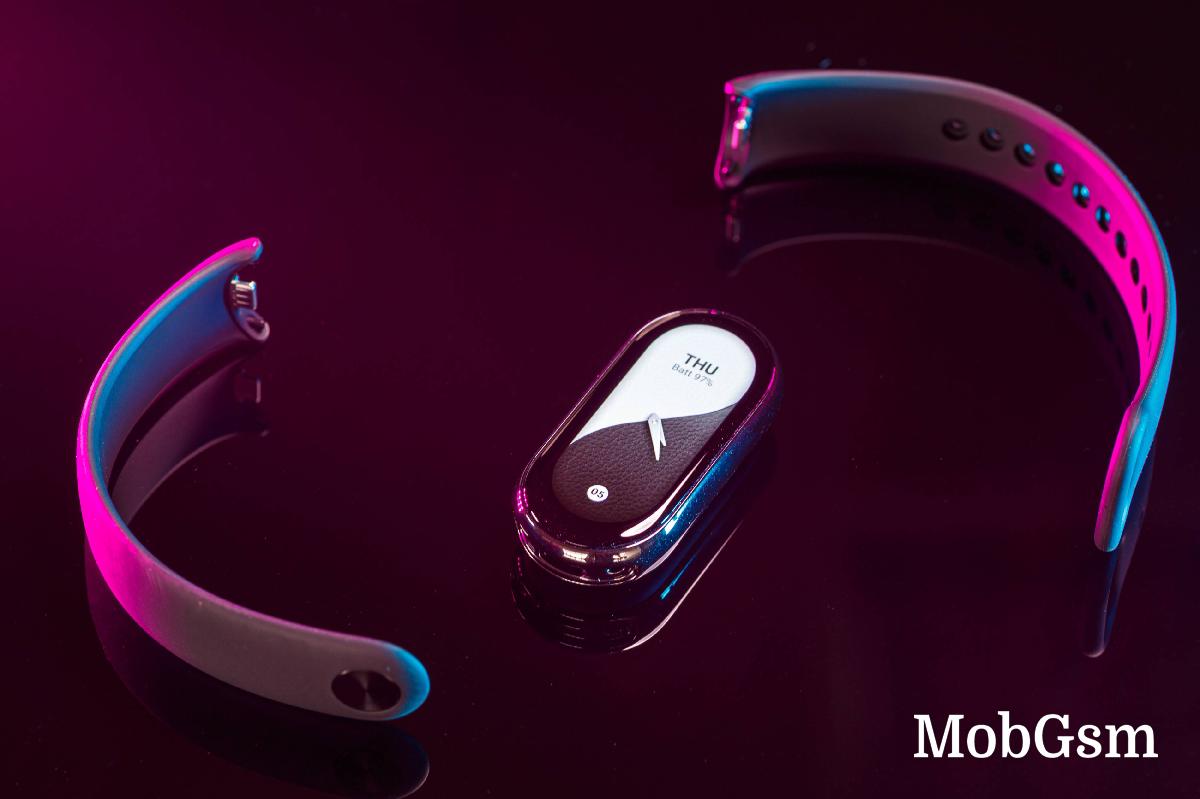
Band 8 measures 48 x 22.5 x 11 mm and it weighs just 14 grams without the silicone strap - a tiny bit more than 13-gram Band 7 and 12-gram Band 5. The new strap design features two quick-release buttons on the bottom and top and is really neat. Hopefully, the release buttons hold up over time and don’t loosen up. Our review unit comes with the black silicone strap and Xiaomi also sent us the green calf leather option which features a belt buckle design as well as the pendant and running clip that let you attach the Band 8 to your shoes.



Xiaomi leather watch strap, pendant and running clip
Band 8 feels light and unobtrusive on your wrist and it’s comfortable to wear all day long. Our only design complaint is the lack of a home/back button like on the Band 5 and prior generations Mi Bands. The larger screen on the Band 8 is nice to look at, but navigating the UI solely via touch controls is not ideal, especially when working out.
Band 8 is 5ATM waterproof so you can take it swimming. The retail box holds the Band 8 and a new proprietary two-pin magnetic charger that ends in a USB-A cable. The charger is not compatible with older generation Mi Bands.
Features
In terms of health tracking, Band 8 offers the exact same core features as its predecessor with 24/7 heart rate monitoring as well as continuous SpO2 tracking, sleep and stress monitoring. There’s still no GNSS sensor on Band 8, so you’ll have to rely on your paired smartphone’s GPS for detailed running or walking data. Our international unit also does not get an NFC receiver which is another big omission.
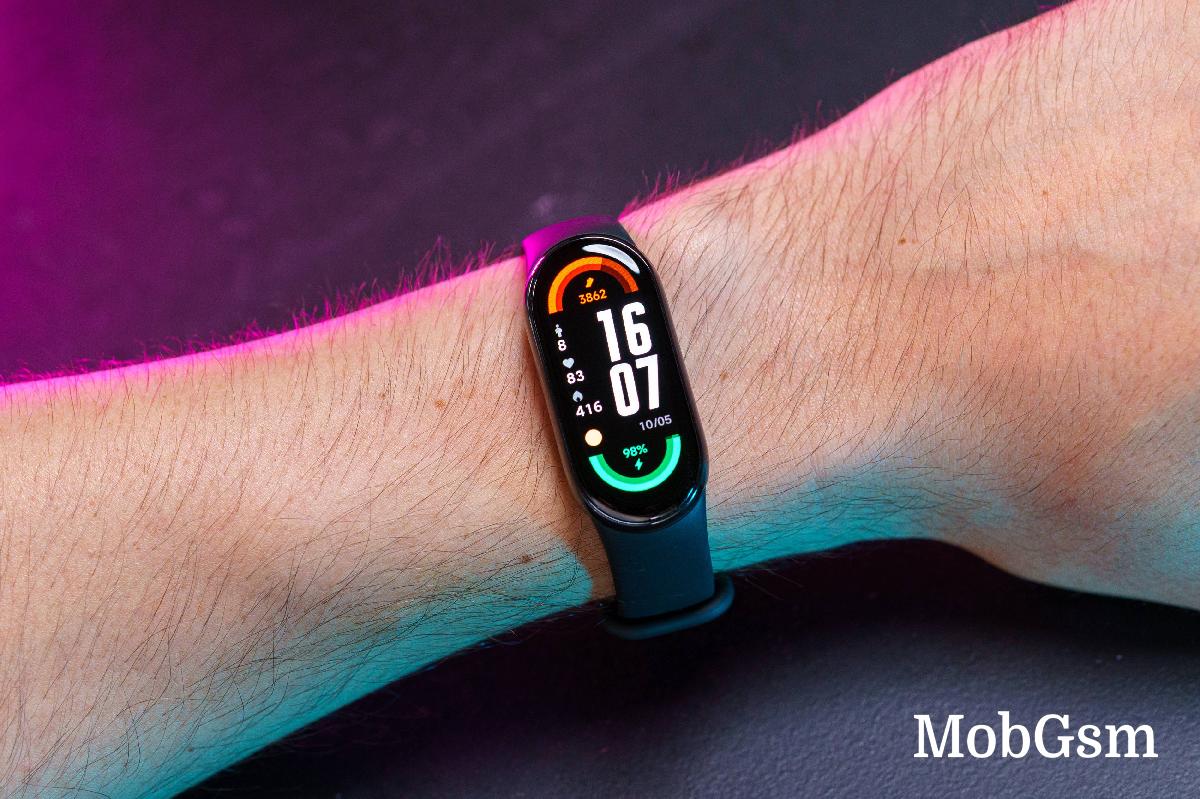
Xiaomi Smart Band 8 offers to track a total of 151 workout modes ranging from your standard running and weightlifting to more niche activities like kite flying, table football and board games. The good news here is that all 151 activities are available on the band directly out of the box. The Mi Fitness app stores up to a month’s worth of health and workout data so you keep track of your progress. You can also sync your workout data to Strava and Apple Health on iOS phones.
Band 8 comes with several running-specific features including on-wrist running courses with options to set goals for distance, heart rate and time. There’s also a smart companion mode that shows your position compared to your set pace in real-time. Vitality score is Xiaomi’s updated Personal Activity Intelligence (PAI) assessment which factors how active your day was based on your movement and exercise patterns taking into account your age, heart rate and workout data over a seven-day period and assessing a cumulative score.
The screen size and resolution on Smart Band 8 match the Band 7"s - a 1.62" AMOLED panel with 192 x 490 pixels. One thing you’ll notice on the Band 8 is the updated 60Hz refresh rate which is noticeably smoother than the older Mi Bands which were stuck at 30Hz. The screen maxes out at 600 nits in auto mode compared to 500 nits on Band 7 and you now get auto brightness, which is a long overdue feature. The screen also supports a double tap to wake up and an Always-On Display (AOD) functionality.
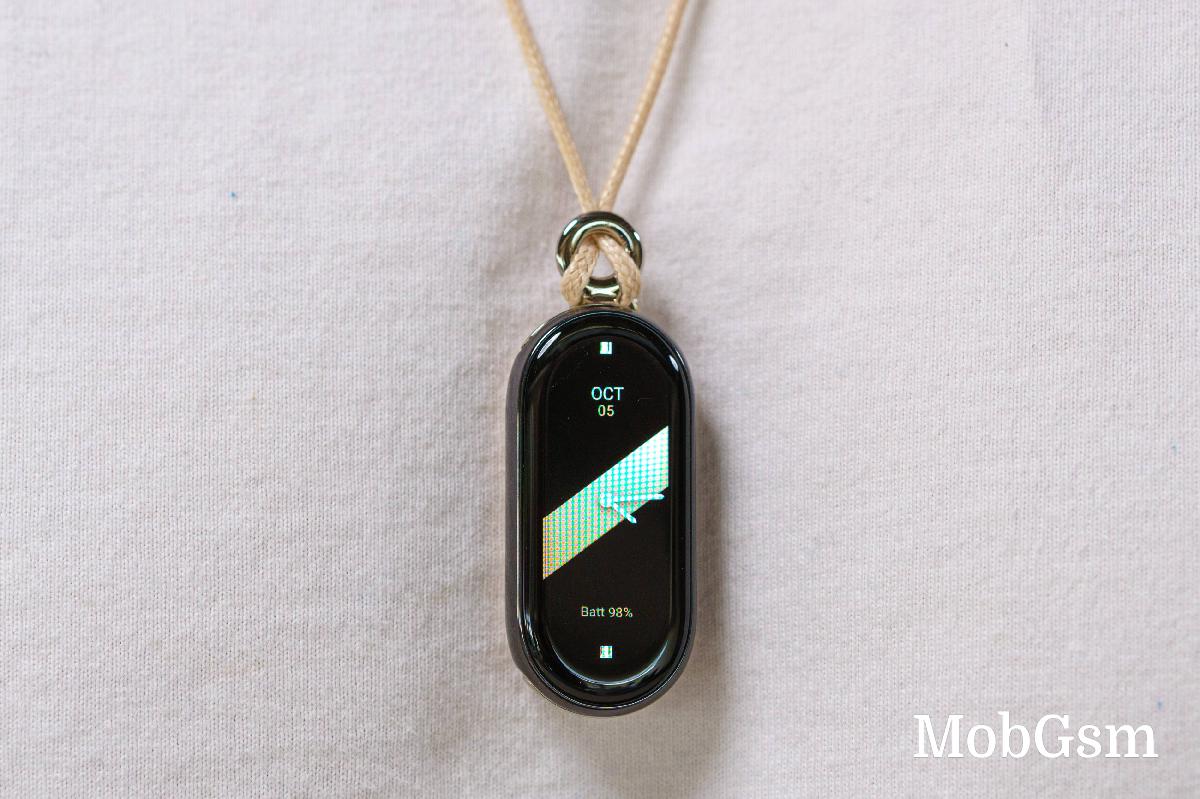
There are plenty of great additional watch face options inside the Mi Fitness app, but for some reason, the iOS app does not have access to the watch face store. Some of the new watch faces also come with mini-games which is another neat addition.
Band 8 also offers basic notifications with the ability to receive text messages without the option to reply. You can also reject calls and send out pre-determined responses via text. The vibration motor here is strong in its default state and can be programmed for an even stronger buzz from the settings menu. The miscellaneous features include an alarm, timer, weather widget, reminders, music controls, breathing exercises and a camera shutter for your paired phone.
Strangely enough, Xiaomi decided to go back to Bluetooth 5.1 when the Smart Band 7 was already on the newer 5.2 version. It still supports Bluetooth Low Energy (BLE) and the only major drawback we can think of is the lack of Low Energy Power Control (LEPC) which is only present on Bluetooth 5.2.
Software and performance
The software side on the Band 8 should be familiar to long-time Mi Band users. You get access to your watch face by turning your wrist or by double-tapping on the screen. From there you can swipe down for notifications or up for the app drawer. You also have your widgets placed on the left and right sides which offer fast access to your most used apps. The new bit this year is that you can now add widgets with two shortcuts on a single card.
You can create your own widgets inside the Widgets tab on the Mi Fitness app with access to all the apps and their specific features and workout modes. You can pair any of the built-in apps while the workout widget also allows you to add up to two of your preferred activity shortcuts directly on the home screen.
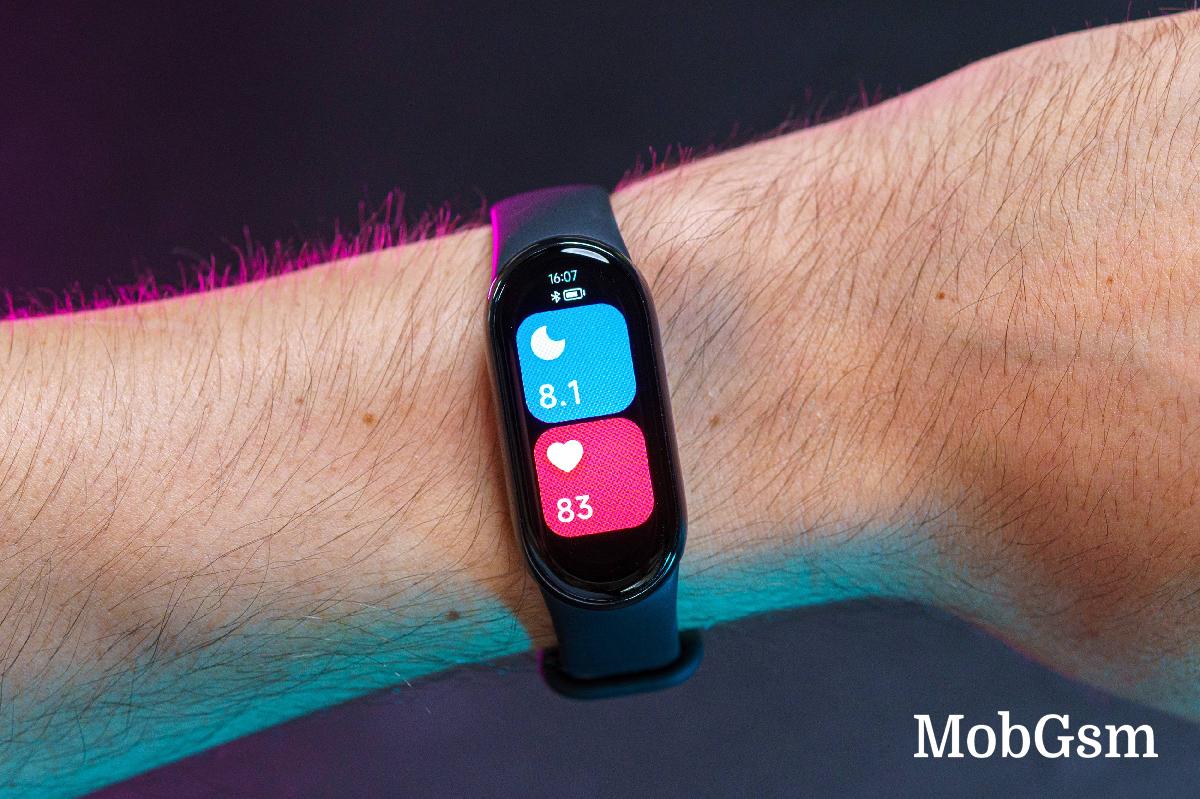
If you’ve used an older Mi Band in the past you’ve probably used Zepp Life companion app on your phone, which is now replaced by Mi Fitness. You can transfer all of your older data between the two apps.
Heart rate tracking on Band 8 is configurable for every 1, 10 or 30 minutes with the shorter values obviously eating up more of your battery life. You can also set high and low heart rate alerts with notifications appearing once you’ve passed or dropped below a predetermined value.
The blood oxygen level tracking (SpO2) is configurable to all-day tracking and it also works during sleep sessions. In terms of accuracy, both the heart rate and SpO2 readings offer similar values to what you’d get on smartwatches and other health trackers. You get consistent results which are a great way to measure your general well-being but keep in mind that you are not getting medical grade readings.
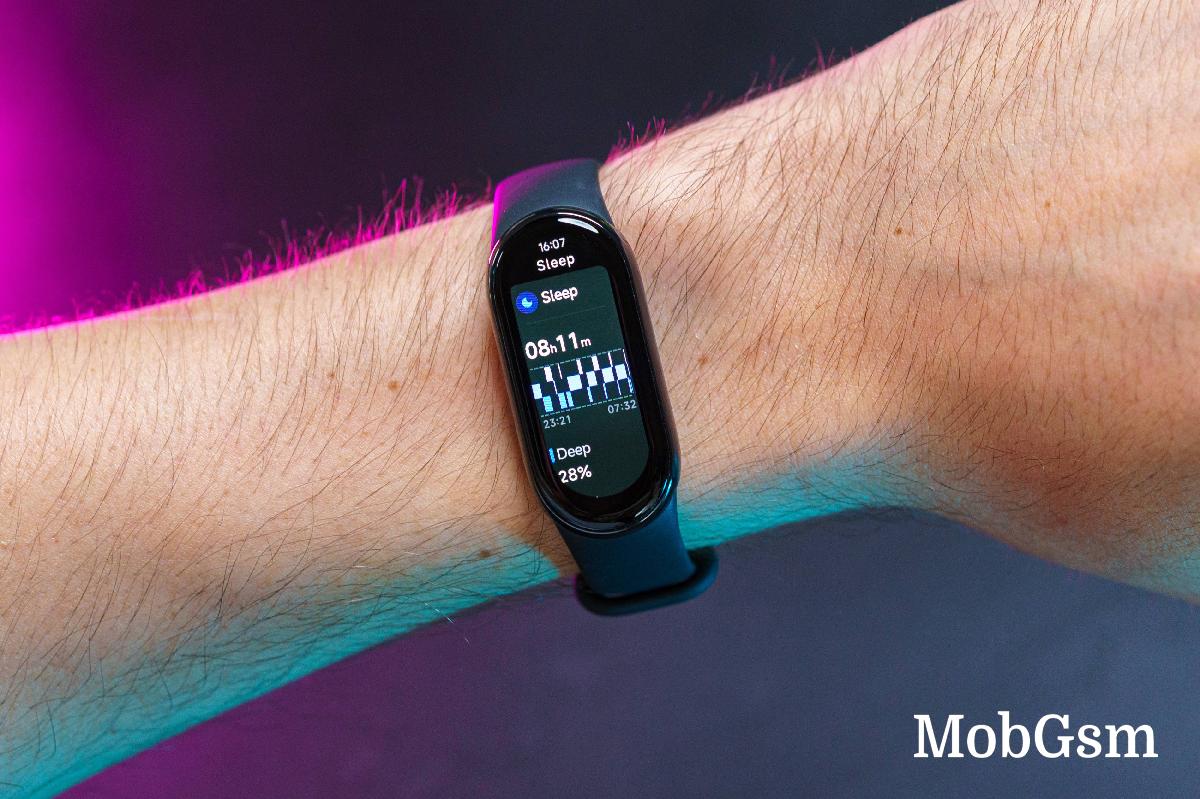
Sleep tracking showed correct go-to-sleep and wake-up times. Band 8’s native sleep app shows your last night"s sleep session with a detailed breakdown featuring the percentage of deep, light and rapid eye movement (REM) sleep. You also get averages for your heart rate and blood oxygen readings directly inside the Sleep app on the band. If SpO2 tracking is enabled, you also get a breathing score based on your blood oxygen levels as well as useful tips inside the companion app on how to improve your breathing during sleep.

Band 8 was able to recognize instances when I’d wake up during the night to go get some water and then accurately log when I went back to bed. The only mishap I experienced with sleep tracking was when the band logged a nap session while it was stored inside a pocket on my backpack.
Activity tracking is more precise than what I’d get from my Band 5 with more accurate step counting. You can enable automatic workout recognition for a few activities like walking, running, and cycling. As for the general workout data, you get your heart rate chart, calories burned, a breakdown of your workout intensity and suggested recovery times.
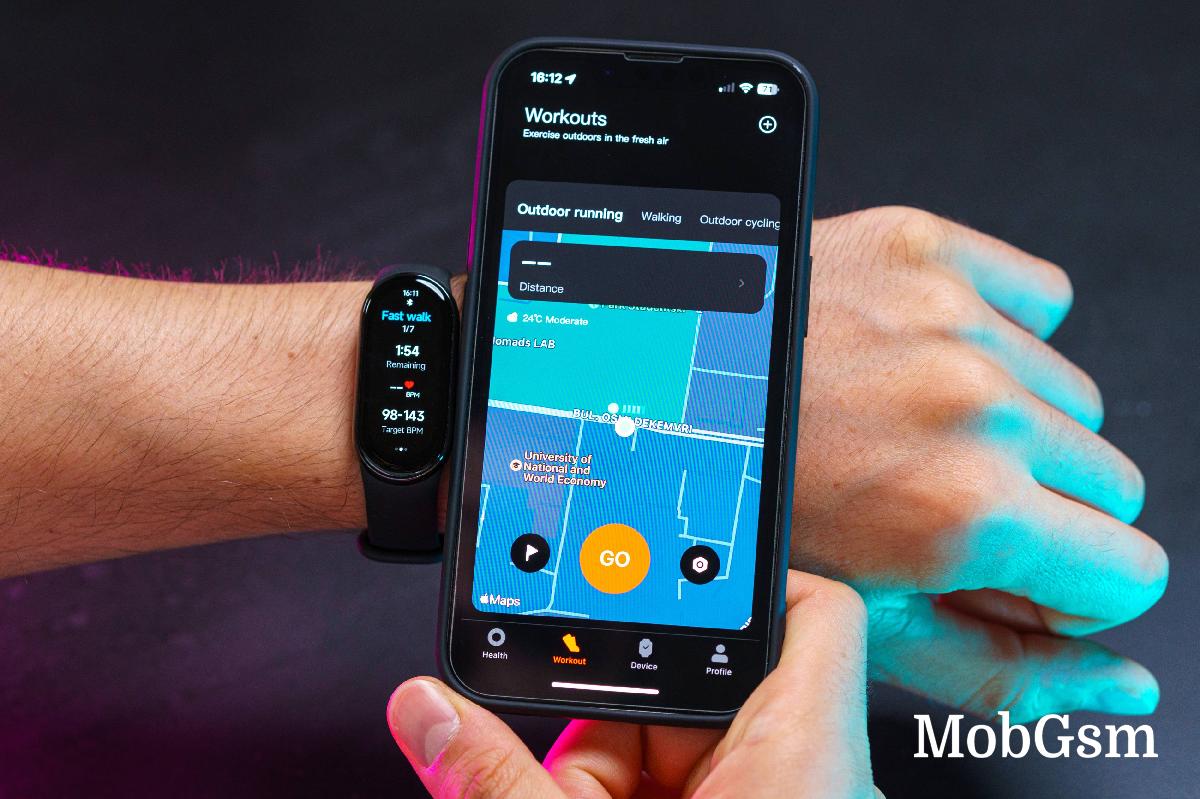
Running and walking can benefit from your phone’s GPS receiver to map your route alongside other vital data like distance covered, pace and your cadence - aka the number of steps per minute.
The optional Running clip accessory that we had for this review allows for some additional readings once you enable Pebble mode from the Mi Fitness app and strap up the Band 8 to your running shoes. Pebble mode evaluates your running form and gives you more specific and supposedly more precise measures on cadence, stride length, ground contact time and impact force. These features are surely valuable for avid runners and can help you adjust your running form in real-time during your workout.
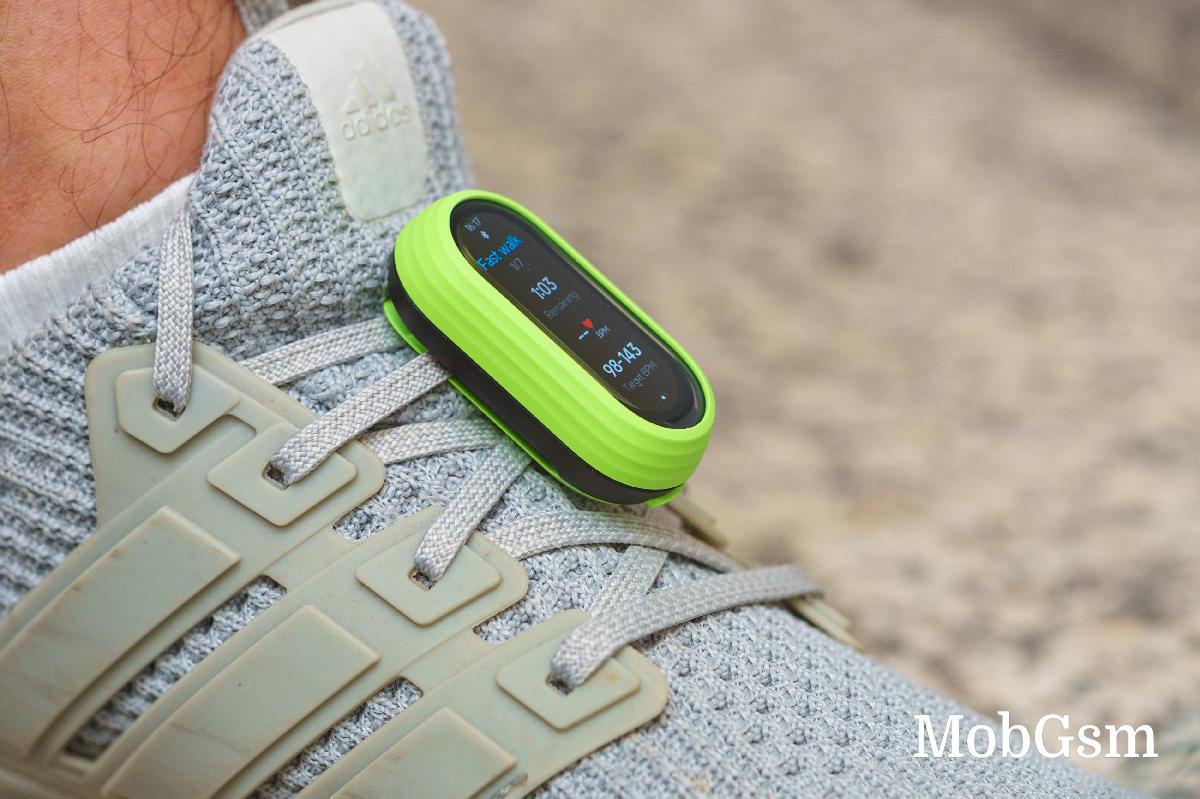
Connectivity between the Band 8 and my iPhone 13 was on point though I did experience several drops which required me to go into the Mi Fitness app and manually sync the two devices over again. As a whole, the Mi Fitness app on iOS is not as polished as its Android counterpart with some features like the watch face store not being accessible at the time of this review.
Battery Life
Xiaomi claims you can expect up to 16 days of use time from Band 8 and its 190mAh cell and 6 days with Always On Display (AOD) enabled. With that in mind, my unit lasted 7 days and 6 hours with all the health tracking features on, with no notifications or AOD enabled. Battery-saver mode can extend the endurance to over 19 days by limiting you to a basic monochrome watch face and step count.
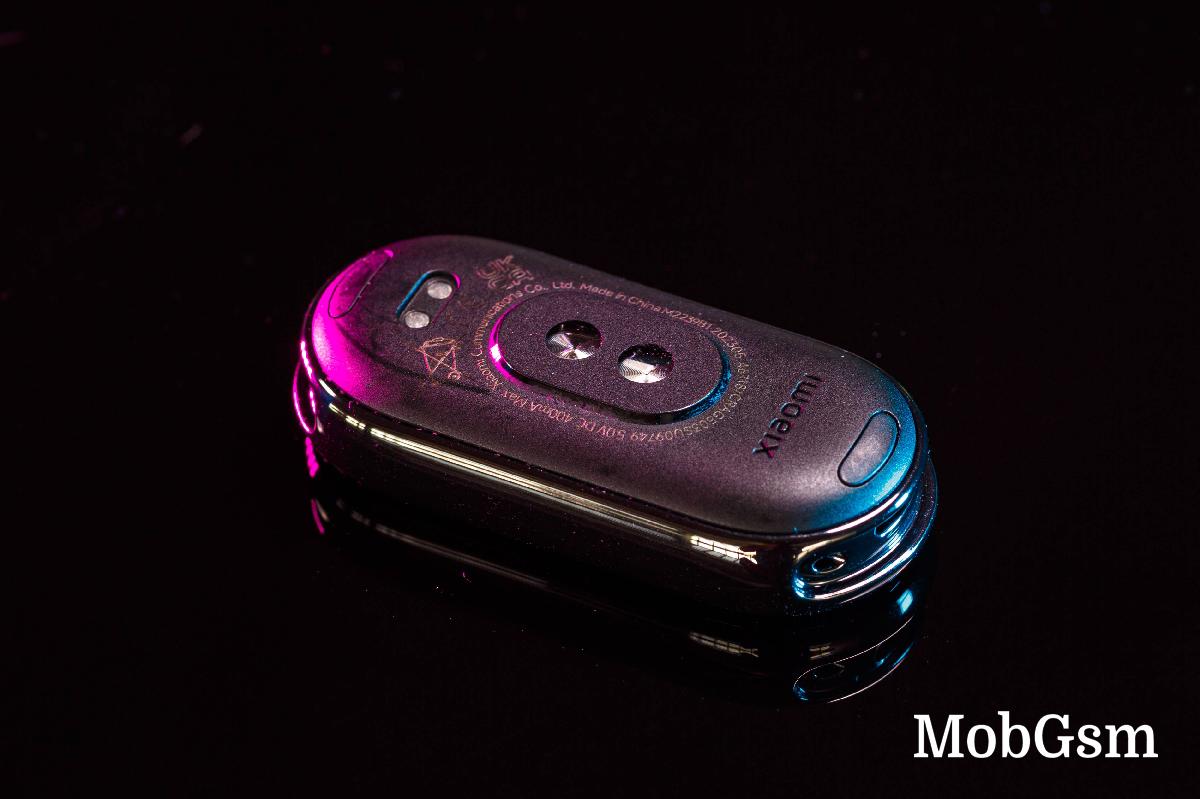
One more under-the-radar addition to the Band 8 is the new battery estimations feature which gives you a rather accurate account of how long you’ll last until your next charge based on your usage and enabled features. This feature is accessible inside the settings on Band 8.
The magnetic two-pin charger is the same one from the Band 7 and Band 7 Pro but older models like the Band 6 and 5 use a different one so you won’t be able to reuse any of those chargers which is a bummer. A full charge takes approximately 1 hour.
Verdict
Xiaomi Band 8 is arguably the best smart wearable option in its price segment and offers impressive features like a large AMOLED display with a smooth 60Hz refresh rate, auto brightness and a more premium design. Coupled with its extensive sports tracking and health monitoring, you simply can’t go wrong by picking up a Band 8.
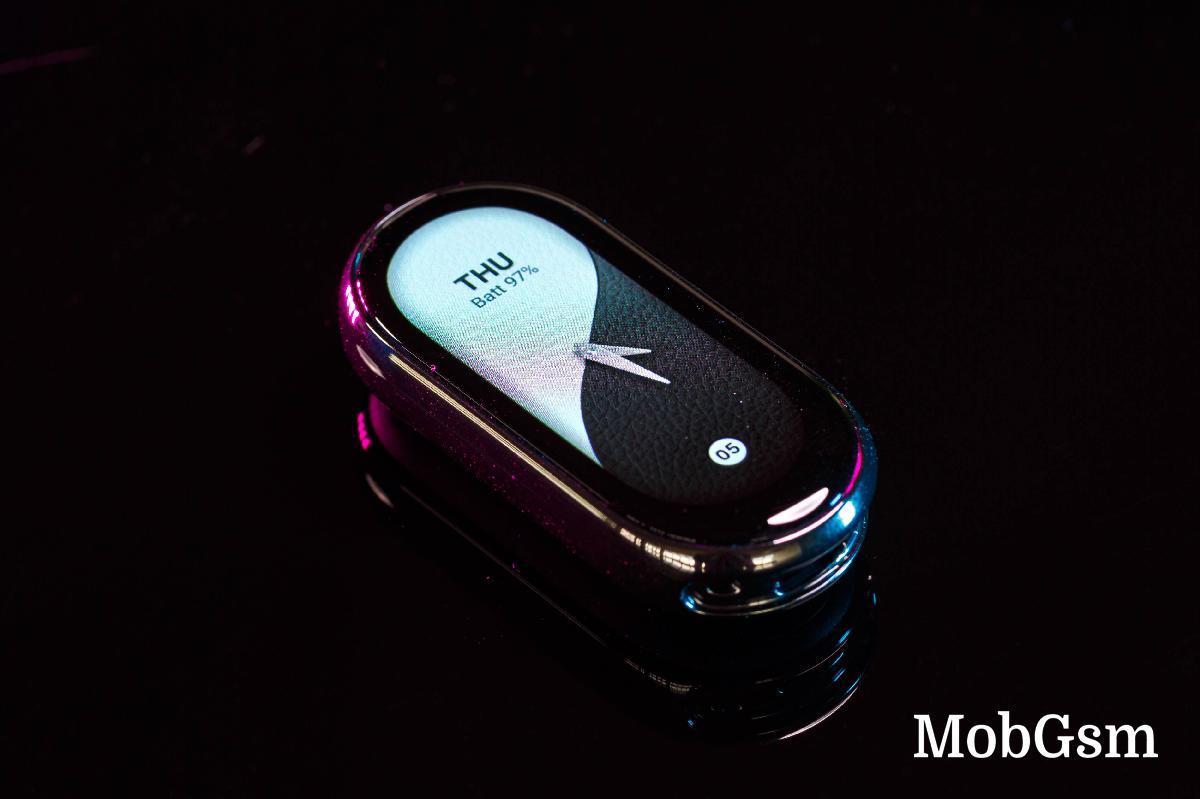
It’s incredibly light and is easy to wear 24/7 and it’s still a great low-profile alarm clock. The added watch strap options now allow you to wear the Band 8 not just on your wrist but also as a pendant or as a running companion on your sneakers for more detailed metrics. Just like with previous Mi Bands, the third-party watch strap options are bound to be extensive as well.
The only gripes we have are the lack of built-in GPS and NFC on our international model and a back/home button to navigate the UI. Still, at its price Band 8 is an excellent choice for a feature-packed wrist wearable that offers great battery endurance and all of your basic health and activity tracking.
We may get a commission from qualifying sales.


